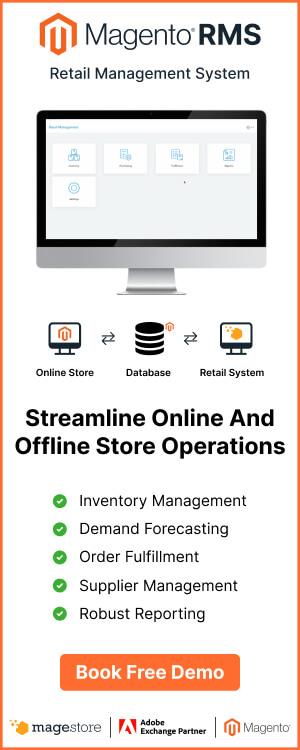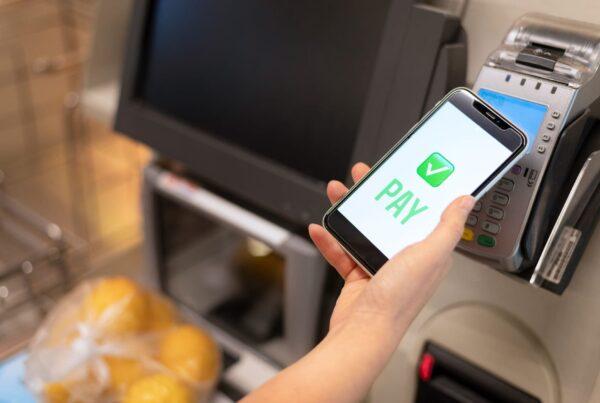Fashion is a fast-changing industry where new trends are constantly emerging and evolving. This characteristic creates a short life cycle for most fashion products. While some trendy items today may become obsolete tomorrow, lost fashion styles can come back with new vigor again and again. The process of fashion trends arriving and leaving is called the fashion product life cycle. In this article, we’ll explore the stages of a clothing life cycle and explore the benefits of a fashion boutique POS to your product life cycle management (PLM).
What is fashion product life cycle?

What is fashion product life cycle?
Fashion product life cycle is the entire process through which a clothing item is introduced in the market till it leaves the market. In theory, there are 4 stages of a product’s life: introduction, growth, maturity, and decline. Depending on the preferences of the majority, some products remain in a prolonged maturity state, while some quickly go extinct, and some eventually return and revolve after many years.
In addition to the 4 traditional stages, fashion retailers must also consider another 4 categories of trends: basics, fashions, fads, and styles. Now let’s explore each of them in detail.
The fashion cycle stages
The life of a fashion item is visualized as a bell-shaped curve, where it starts in the introduction stage, gradually goes up in the growth stage, reaches its maximum popularity and profit in the maturity stage, then demand decreases and it falls into the decline stage.

Product life cycle stages
Introduction
Introduction stage is the beginning of the product life cycle of clothes when a new item is launched in the market. In this stage, the item requires lots of marketing effort and dedicated approaches to disclose it, like advertisements, fashion shows, magazines, PR events, etc. The primary goal is to promptly educate and attract customers. Some customers are open and adapt to new trends easily. They are brand advocates and are willing to spend more money in this first stage.
Growth
With the rising appeal of a product, more and more people are accepting the fashion trend. As a result of fashion recognition, companies will produce more to meet demand. Sales will begin to climb significantly, and more competitors starting to notice the opportunity. As the trend spreads, distribution will become more widespread. In this stage, the objective of marketing will be on increasing exposure to gain approval from the general public.
Maturity
In this phase, the product has reached its peak of popularity. When the public’s interest decreases, the item’s price and sales volume go down, meaning profit margins are thinner. Competition for this item also becomes more intense and there’s no room for new entries, indicating that the market has reached saturation. In the maturity stage, the marketing purpose is to fend off competition, and introduced altered products if possible. This leads to opportunities for new fashions.
Decline
While companies can make efforts to extend the product life in the market, an eventual decline is unavoidable. In this stage, the appeal and demand for the product decrease, causing sales and profit to plummet. The item loses its market share and competitors are progressively being phased out with the threat of getting stuck with outmoded inventory. Eventually, the product retires from the market, and people’s attention shifts to the latest trend.
The value of the global fashion industry has reached 3 trillion dollars and has become more competitive than ever. Thus, it is important to understand where your fashion product is in its life cycle to have suitable strategies for your boutique.
In addition to the above 4 stages, there’re 4 more phases you should know specifically for the clothing industry: basics, fashions, fads, and styles.
Basics
Basic clothing refers to items that are simple and easy to wear, such as plain T-shirts or pants. The cycle of basics is usually much longer, and a small variation can create a difference. Sales are a bit slow in the introduction stage, but it’s gaining popularity steadily and bringing sustainable profit to the company in the long run. The mature stage has the largest sales volume. However, by distinguishing among the variations, some items stay in the maturity stage much longer than others before entering the decline stage.
Fashions
Fashion happens when the items spread rapidly everywhere. Therefore, customer demand is rising in the growth stage, and companies can make a good profit during this stage. It won’t reach the decline stage until a new fashion emerges and replaces the old one.
Fads
Fad stage can come very fast when interest in the products drops. After gaining massive popularity during the introduction and growth stage, the sales are at the highest and get lost after a while. The duration of fads is very short and common for products targeting young people.
Styles
Style is the expression of an individual’s thoughts, characteristics, and creativity. Styles of clothing help highlight your personality and indicate a message of who you are. When a style is universally accepted, there are 2 different destinations for it. If it lasts for a long time, it becomes fashion. Lasting for a short time, it is called fad.
How a fashion POS system can help with product life cycle management

How a fashion POS system can help with product life cycle management
Product life cycle management (PLM) is the strategic process of managing the product’s journey in a full spectrum, from initial design, and development, to official launching, service, and disposal. Simply put, PLM is managing the complete process involved with products from cradle to grave.
To have an effective fashion product lifecycle management, implementing a suitable fashion boutique POS system can be a big help once you started selling an item.
Here’re some ways a POS system can benefit PLM fashion:
Identify the stage of fashion life cycle
A good fashion boutique POS system allows you to track real-time sales volume and generate reports to see if the item is in its best stage. If sales are increasing gradually and more customers are asking for this product, it’s in the growth stage. This is the golden period to boost sales by streamlining production and marketing. An effective technique for selling apparel is the click and collect approach, where you allow customers to order online and pick it up in a convenient location.
In contrast, if the data reflects slowing sales over time, you can prepare for a decline stage coming soon. For example, try to move stock quickly by offering discounts, so you won’t be left out with outdated inventory.
Promote marketing and sales
A fashion POS software can help you clear stock and attract more customers with flexible promotions, such as offering discounts based on catalog rules, cart rules, coupon codes, or holiday seasons. The best fashion boutique POS system leverages omnichannel sales and synchronizes all promotions across both online and offline stores. Since fashion products usually have a short life, you should take advantage of the POS system to generate profit when the products are still trendy.
Forecast product demand
For seasonal clothing items, forecasting demand is important. You can gather previous sales data and customer data in the POS to analyze the behaviors and find insights for your next products. By identifying which product may have high demand, you can be well-prepared from procurement, inventory management, to store operation, and customer service and enter the season with confidence.
Control inventory and product SKUs
With a strong apparel POS, management of product SKUs and inventory is effortless. You can control products by various attributes like color, size, materials, supplier, model, etc. Besides, the fashion POS software allows you to check the availability of stock in all stores, create low-stock alerts and automatically place purchasing orders to refill stock.
FAQs
1. What are the must-have features of a POS system for fashion retailers?
- Product management: easily set up and manage products with variations;
- Inventory management: keep stock accurate, track stock flow and status for different stores;
- Stock reports: identify best-selling and slow-selling items to have proper promotions;
- Onmichannel selling and sync data between sales and inventory;
- Fast order fulfillment: accelerate the processing time when customers make a purchase, both online and offline;
- Loyalty programs: keep customers coming back with reward points or gift cards;
- Seamless in-store product return;
- Allow click-and-collect feature;
- Manage customer data and analyze it to understand their behaviors and preferences.
Magestore POS is a powerful POS system for fashion boutiques. Apart from the above features, it is connected to Magento backend, thus all data is synced in real time across all online and offline channels. The POS has a fast-loading speed and can be accessed on any device thanks to the PWA technology.
2. How to choose the best tool for Product Lifecycle Management (PLM)
Here’re the criteria to choose a product lifecycle management software to sufficiently manage the life cycle of clothing:
- Collaboration tool: Teams can work seamlessly by sharing ideas and feedback, preventing lost-in-translation problems;
- Design and visualization: Computer-aided design (CAD) tool enables you to create graphical drawings of products in 2 or 3 dimensions;
- Content authoring: To generate external and internal documentation of products to create instructions and enhance productivity;
- Centralized data repository: All data and documents from different stakeholders like marketers, suppliers, distributors, and engineers are saved in 1 location for easier access.
3. What are the phases of product lifecycle management (PLM)
There’re 3 main phases of PLM:
- Beginning of Life (BOL): BOL includes all of the design and manufacturing, which consists of the initial concept and development, any prototypes built and testing, and the production to transforming the concept into tangible products;
- Middle of Life (MOL): MOL is the post-manufacturing phase when you distribute and service your products. This is when you carry out logistic activities and selling channels to push the products to end users, as well as get customers’ feedback to improve the products;
- End of Life (EOL): EOL phase is the retiring, recycling, or disposing of your product. EOL happens when users no longer have a demand for the product. At this stage, you collect information on which parts and materials are still valuable and plan for your next product.














